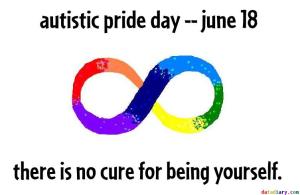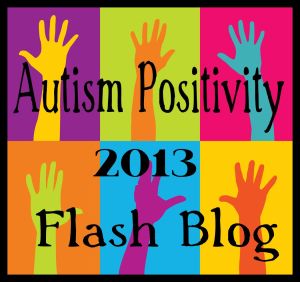A First Hand History of Early Online Asexuality
To celebrate Asexual Awareness Week 2017, I’ve assembled this edited version of my notes and slides for the 2012 WorldPride Asexual Conference in London, where I was one of the ‘headline guests’.
This talk on the history of the online asexual movement opened the conference, which corresponded with Asexuality.org‘s 10th anniversary year.

Please note that this talk is now itself 5 years old, so descriptions of the ‘current situation’ have become their own part of community history.
Also, much of what I’d planned to say had to be edited on the fly due to unforeseen time pressures, so some of what’s included below is being shared for the first time.
The Ghost of Asexuality Past
Hello Asexual Community! Back in April 2002 I created the Asexuality LiveJournal community, which was probably the first generally ‘sex positive’ asexual discussion forum, pre-dating the AVEN forums by over a month.
A couple of months after that I was invited to get involved with AVEN and went on to write their comprehensive asexuality Frequently Asked Questions, ‘Questions Asked by Asexual and Questioning People’, which still forms the basis of the current General and Relationship FAQs.
My involvement with the community dwindled after the first couple of years, and so I’ve been asked to give a historical perspective on the formation of the current asexual community and movement. So think of me as ‘the ghost of asexuality past’.
My Obligatory Asexual Life Story
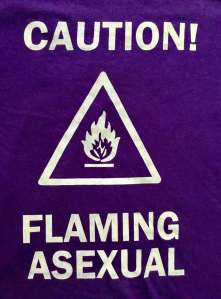
Before I talk about that though, I should explain a little about myself. I’m queer, trans, genderqueer, neurodivergent and of course asexual. I was involved with both queer and transgender communities online and in person before I managed to get involved with any asexual community – mainly because back in the 1990s both of those communities were considerably easier to find!
When I was growing up, I didn’t realise I was queer or know I was trans, but I was acutely aware that there was something different about me. As I entered my teens, it became obvious that everyone else was experiencing sexual attraction and going through flirtation and dating rituals that seemed completely alien to me.
In my early teens I assumed that I was a ‘late bloomer’, but by my middle teens I’d realised that things probably weren’t going to change and I saw myself as broken and believed that I’d never be able to be in love or have the type of happy life I’d been raised to expect.
Understandably, I didn’t have a very positive outlook about this and didn’t have much self esteem as a result, but that changed at age 16 when I realised (thanks to Ellen DeGeneres) that I did have romantic feelings towards others, and that these were what society called queer.
Identifying as queer made a huge difference to me – here was a movement that was about celebrating being different, not fitting into society, maybe not even fitting properly into any other sexuality labels, but finding pride and positivity in that. This was just the type of perspective I needed at that point in my life.
Five Things Only 90s Aces Will Understand
When I was 17, I got access to the Internet and tried to find others like me. I quickly found late 1990s online LGB, queer, transgender and even genderqueer communities, but I struggled to find others who didn’t experience sexual attraction.
Attempts to research this produced information about celibacy or abstinence (intentionally choosing not to have sex) and impotence or sexual dysfunction, but very little about people who were able to enjoy sexual stimulation, but didn’t have the drive to share that with other people.
DIY Label – Conceptualise Your Own Asexuality
One of the reasons why there was so little out there – and why what was out there was so difficult to find – was that asexuality wasn’t really a defined thing.
Unlike today, you didn’t stumble across other asexuals on every social website you visited and you certainly wouldn’t hear about the orientation from your local LGBT group or your school’s sex education lessons – well, not unless you were being taught about spider-plants or amoebas!
Everyone who was talking about being asexual back then had effectively invented the concept of human asexuality.
You’d have to have stumbled across the word in your biology classes, or come across it in some other context, and have identified with it so strongly that you’d thought to apply it to yourself and then not been put off when you entered this in a search engine and found nothing relevant.
My Doctor Is Asexual

I probably first heard asexuality applied to a person through being involved in online Doctor Who fandom. The 1996 TV movie had just happened and fandom debates were still rife about whether the Doctor kissing someone was acceptable given this had never been shown in the previous 33 years of the show’s history.
As such “My Doctor is asexual” was a commonly heard sentiment.
Of course, most of these fans argued that this was because he was an alien and so not interested in human beings. And a Doctor Who novel published that year even explained how the Doctor’s race reproduced without having sex.
Ableist Assumptions
Before I found my place in queer communities of various kinds, and a decade before I received any kind of neurodivergent diagnosis, I had a strong feeling of being different and unable to be like others, no matter how hard I tried.
This feeling led me to read about other types of difference and marginalisation, and to feel an affinity with others who were supposedly “broken” by society’s standards. This led me to 1990s disability rights websites and to article after article railing against the ableist assumption that disabled people were ‘asexual’.
Androgynous Associations
I also came across ‘asexual’ used negatively in queer and genderqueer writing. Typically the word would be used to critique media portrayals for only allowing the gender nonconformity associated with queer sexualities into popular culture once all sexual context had been completely removed.
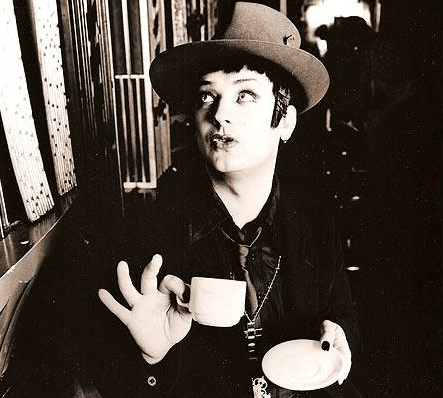
I most commonly recall this mentioned in relation to Boy George’s 1980s public persona who claimed “I would rather have a nice cup of tea than sex”, while leading a very different life in private.
Asexual? Is That Like Toby?
Another notable androgynous person often associated with the word ‘asexual’ was a self-described neuter person using the name Toby, who had appeared on the American talk show Sally Jesse Raphael in 1989.
Toby talked about being androgynous, nonsexual and having an externally sexless, intersex body.
This appearance made such an impact on audiences that people were still mixing up the concepts of being neuter, androgynous, intersex and asexual over ten years later, to the point where this was still a regular assumption that late 90s, early 2000s androgynous genderqueer people had to combat. It’s still talked about today and even inspired a 1995 punk song.
In my email archives, I found that AVEN had even received email from someone trying to track Toby down in 2002.
This wasn’t so surprising as, rather than being described as intersex, Toby was often referred to in literature as asexual – literally being without a sex – although I don’t believe Toby ever referred to xeirself that way.
![Asexualism: The Genetics but Not the Sex. A final type of gender category is asexuality. [Link to transcript]](https://graphicexplanations.files.wordpress.com/2017/10/worldpride-004.png?w=840)
Thankfully the visibility work of AVEN meant that a side note in the 2006 second edition mentions that asexuality ‘often refers to the lack of sexual desire’ and later editions switch to solely using asexual in the sense we use today.
Asexual in the 90s – Not Very Specific
So, most uses of ‘asexual’ as a description of a person readily available in the 1990s weren’t talking about lacking sexual attraction but all romance, sexuality and sometimes even gender.
The term was often associated with being socially or literally neuter and often confused with androgyny or intersexuality.
Sometimes it was used interchangeably with celibacy or associated with problematic assumptions of sexual inadequacy.
The most common factor though was that it was rarely seen as a word people used to explain their own identity.
Human Asexuals in The Year 2000
Things began to change in 2000 though, as people who had claimed the label asexual for themselves started to find each other and talk about their shared identity on the internet.
And I’m inclined to pin this development on the rise of the superior Google search engine.
The Earliest Asexual Rallying Point
The earliest article that I recognise as claiming and defining our community’s meaning of asexuality is Zoe O’Reilly’s 1997 article ‘My life as an amoeba’ for the StarNet Dispatches webzine, which (somewhat facetiously) compared a ‘lack of sexuality’ with the ‘trend’ towards coming out, after Ellen DeGeneres’s 1997 Time Magazine cover interview: “Yep, I’m Gay”.
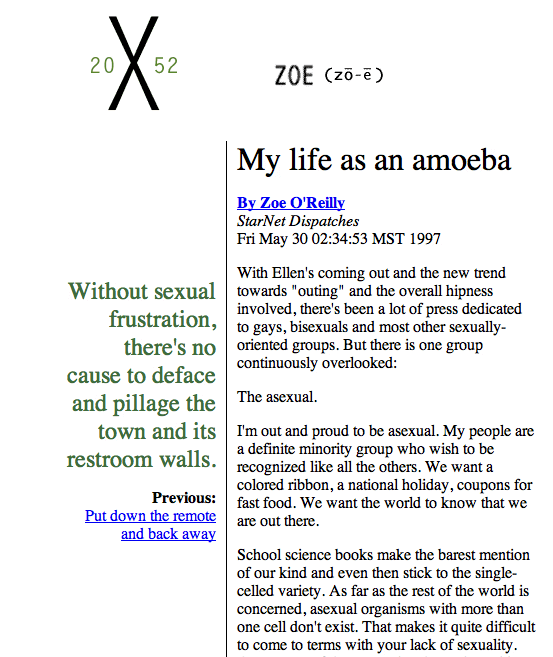
With Ellen’s coming out and the new trend towards ‘outing’ and the overall hipness involved, there’s been a lot of press dedicated to gays, bisexuals and most other sexually-oriented groups. But there is one group continuously overlooked:
The asexual.
I’m out and proud to be asexual. My people are a definite minority group who wish to be recognized like all the others. We want a colored ribbon, a national holiday, coupons for fast food. We want the world to know that we are out there.
School science books make the barest mention of our kind and even then stick to the single-celled variety. As far as the rest of the world is concerned, asexual organisms with more than one cell don’t exist. That makes it quite difficult to come to terms with your lack of sexuality.
‘My life as an amoeba’ received a handful of comments when first published, but started attracting a stream of long joyful responses from fellow asexuals as Google became more popular in 1999 and 2000.
A 2017 side note about the first article to articulate asexual identity:
Since 2012, I’ve tracked down an earlier article on asexuality that I wasn’t aware of at the time. I now believe that Jim Sinclair was also the first person to self-describe the current meaning of asexuality, and to express true asexual pride, in an article ‘Personal Definitions of Sexuality’, published online in 1997 and written for a class project in spring 1987:
I define myself as asexual, because if I am asexual I have all the equipment I need. I define my expressions of sensuality, eros, and love as nonsexual, because if they are nonsexual they are not rendered invalid by my asexuality. I define my love as authentic, because I define my humanity as complete and unimpaired.
However, this never came up in any of my numerous Google searches at that time.
2017 Side Note Ends.
Life With The Amoebas
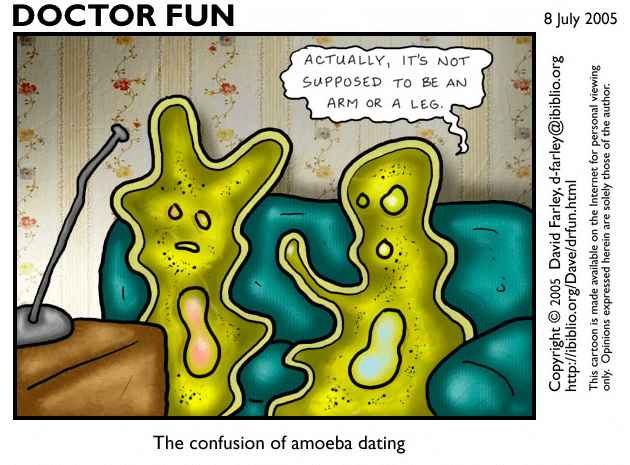
One might reasonably call the comments on Zoe’s amoeba article the first adhoc online asexual discussion community, given that, for a while, it was the only place asexuals could find and talk to each other.
Before cake, before we were aces, we were the amoebas
Cutesy references to asexuals as amoebas were common in late 90s/early 2000s pre-AVEN asexual communities, and arguably a humorous reaction to the rather tedious criticism from detractors that none of us understood basic biology(!).
It also likely inspired the first asexuality focused discussion mailing list, Haven For The Human Amoeba, created on Yahoo Groups in 2000 – especially likely given that the group creator linked to Zoe’s article early on.
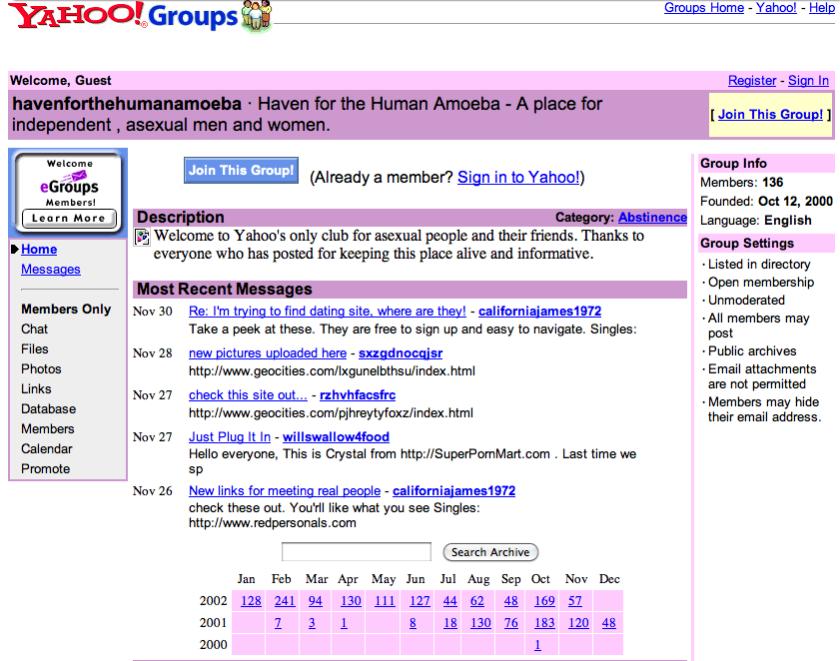
‘Human Asexuality’ (It’s A Thing, Google It!)
As well as amoeba imagery, it was also common to specifically refer to human asexuality (possibly because you could Google that and actually find information).
In fact, I understand that AVEN was almost called HAVEN, the Human Asexuality Visibility and Education Network, presumably a backronym from the mailing list community name that preceded it – but DJ was talked out of this by a friend.
Thankfully the community later discovered that word ‘asexuality’ was also easy to google, without requiring any awkward species-first wording!
Early Online Asexual Communities
Even with our shared label and a means for people using that label to find each other, there was still no neat definition of asexuality and very little agreement about what being ‘asexual’ meant.
There were a growing collection of online spaces and sites, but they each defined asexuality in different ways, assuming that they defined it at all.
Rather than using the lens of sexual orientation to frame their experiences, most asexual mailing lists and discussion communities of that era simply worked around the experience of not having sex, for various different reasons.
At this time, there seemed to be three distinct varieties of people talking about identifying as asexual:
Nonsexuals: Lets Not Have Sex Together!
First there were sites and mailing lists that acted as support groups for people who didn’t have sex and were looking for kindred spirits.
These sites tended to simply express the fact that some people didn’t feel the need to have sex and were happy with this, or explained the experience of being a ‘human asexual’ and asked if anyone else felt the same way, or had advice to help solve problems.
The comments on Zoe’s article and the Haven For The Human Amoeba are prime examples here.
Anti-Sexual Spaces: Everyone Else Is The Worst
Next there were anti-sexual communities focused around the word ‘asexual’, which were dominated by angry critiques of the sexualised nature of society and the ‘cheap and meaningless’ sex that other people were having.
The beginnings of the ‘Asexuals’ LiveJournal community stand as a prime example of this.
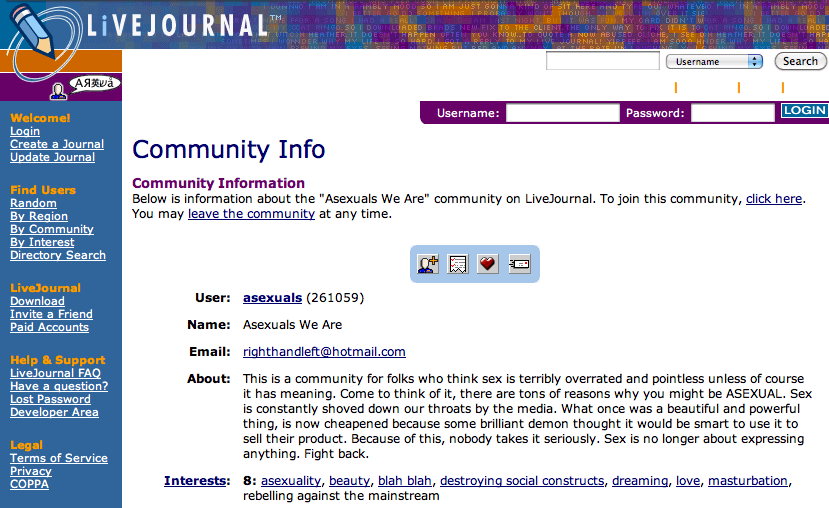
This is a community for folks who think sex is terribly overrated and pointless unless of course it has meaning. Come to think of it there are tons of reasons why you might be ASEXUAL. Sex is constantly shoved down the throats by the media. What once was a beautiful and powerful thing, is now cheapened because some brilliant demon thought it would be smart to use it to sell their product. Because of this, nobody takes it seriously. Sex is no longer about expressing anything. Fight back.
Of course, there’s perhaps a natural tendency for those who don’t experience sexual attraction to increasingly resent the pressure to be sexual in our society, and to define themselves in opposition to this. Especially without any asexual community accepting them for who they are.
However, many of the loudest voices in these communities wouldn’t even fit today’s accepted definition of ‘asexual’ as they saw asexuality as a choice, describing it as a kind of self-enforced radical celibacy.
It’s wasn’t an asexual movement that we’d recognise today, but a kind of ‘proto-asexuality’ that many of us tried to fit ourselves within.
Prescriptivist Asexuality: Libidoists Need Not Apply
Finally there were the more elitist and exclusive asexuals who only wished to mix with those who were entirely nonsexual and had never experienced the smallest hint of a libido, nor ever experimented with sex in any way, even on their own.
The self-declared ‘Official Asexuality Society’ set itself up with a very strict definition of what one needed to be and do in order to become a member
[Content note on the screenshot below for discrimination, intolerance, childhood abuse, sexual assault and implied ableism]

Their rules required that potential members fill in a questionnaire designed to expose any ‘libidoists’ or ‘solosexuals’ who might be trying to sneak into their exclusive asexual club.
Even though most asexuals of the era weren’t members of The Society, their McCarthyesque purity standards served to strengthen taboos in the early community that led many of us to fear mentioning any of the ways in which we might not quite fit into community norms.
Descriptivist Asexuality: Here’s What We Have In Common
Documenting all of these different trends and factions were asexuals that sought to explain asexuality without enforcing any firm view of what the label should mean, just what members of the online communities meant when they said they were asexual.
A prime example of this was the site asexuality.net, created circa early 2002 by L.J. who self-described as:
a 21 year old asexual male, who has always felt out of place, because of his lack of a sex drive. After many years of making dirty sex jokes, pretending to hit on female friends, and doing whatever I could to “fit in,” I finally came out to myself and a few close friends. Right now, I have no plan on ever being romantically linked with anyone and am very happy in my asexuality and being with myself.
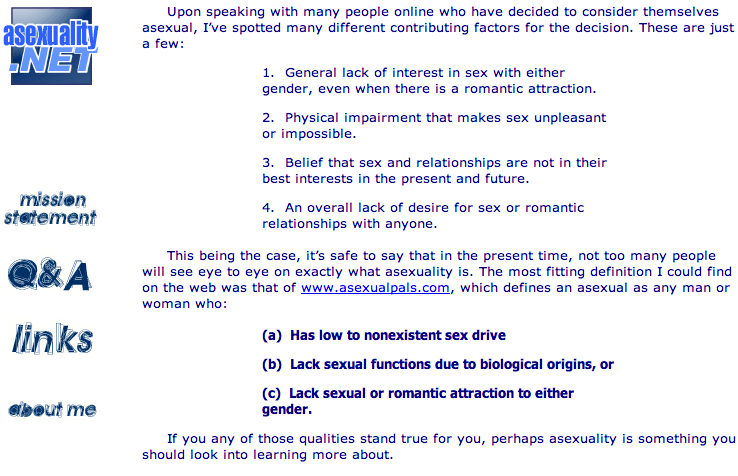
Upon speaking with many people online who have decided to consider themselves asexual, I’ve spotted many different contributing factors for the decision. These are just a few:
- General lack of interest in sex with either gender, even when there is a romantic attraction.
- Physical impairment that makes sex unpleasant or impossible.
- Belief that sex and relationships are not in their best interests in the present and future.
- An overall lack of desire for sex or romantic relationships with anyone.
This being the case, it’s safe to say that in the present time, not too many people will see eye to eye on exactly what asexuality is.
2017 Side Note on an Asexual Alternate History
Not included in my talk, barring a mention in the screenshot of Asexuality.net, was the first asexual dating site (or ‘Introduction Service’), AsexualPals.com, which still exists, almost completely unchanged! (Although the forums are ‘temporarily offline’.)
The pay-to-join site was created around the same time as AVEN’s first articles were published on DJ’s college webspace and offers a fascinating peek into an alternate asexual community that never was. One that used imagery so cis-heteronormative that it was almost indistinguishable from a conservative Christian dating service.
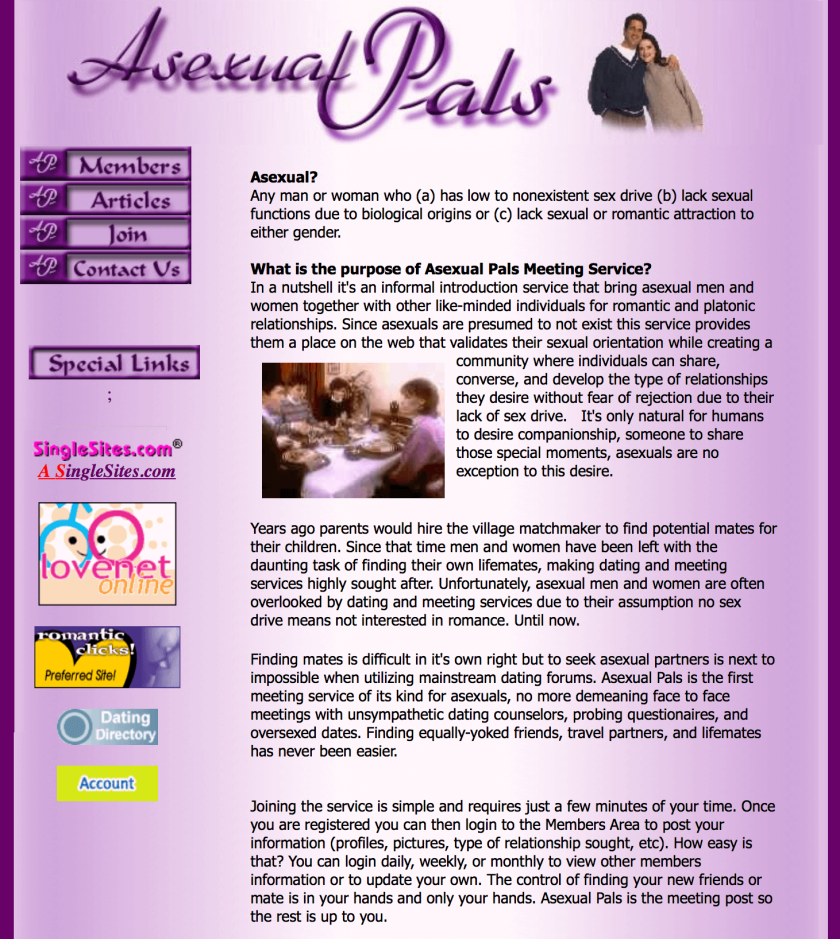
At least it was still purple, right?!
Asexual Pals was notable for having the most concise pre-AVEN definition of asexuality:
Asexual?
Any man or woman who (a) has low to nonexistent sex drive (b) lack sexual functions due to biological origins or (c) lack sexual or romantic attraction to either gender.
…albeit one that excluded me just by starting “Any man or woman who…”
2017 Side Note Ends.
For more early asexual websites and communities, see the August 2002 AVEN links page. DJ and I were quite late to the party!
All Labelled Up With Nowhere To Go
While I was certain that there were many others like me within these groups, I can’t say I really felt at home within any of them.
I wasn’t entirely nonsexual. I saw myself as having a kind of sexuality, just not one that was directed towards sexual attraction.
I’d had romantic relationships before, mostly nonsexual ones, but I had enjoyed sex with one of my more persuasive partners and found it quite good fun, if not worth the fuss that everyone else seemed to make about it.
Of course I had not the smallest chance of being allowed through the well-guarded gates of the ‘Official Asexuality Society’ due to my past history of enjoying sex and sexuality.
And I wasn’t even slightly anti-sexual, in fact by this point I was the president of my university’s LGBT society and coordinator of a student sexuality helpline. I spent a good portion of my spare time supporting other people to come out, find community and feel comfortable with sexual feelings they’d learnt to think of as shameful.
Queering Things Up – Building An Inclusive Asexuality
Because of that background and experience, I tended to see asexuality in terms of sexual orientation, rather than nonsexuality or anti-sexuality.
In my eyes, asexuality was just another way to be queer, and I wouldn’t want to see any queer community that defined itself by criticising the sexuality of others, or which imposed strict gatekeeping and policing of who got to call themself ‘queer’.
I’d always looked for and organised queer spaces that told people it was OK to be different, welcomed them into the fold and celebrated their sexualities and genders – and what they chose to (safely and consentingly) do with them.
So that’s what I hoped to find when I went looking for other asexual people online – a broadly sex positive, inclusive, celebratory asexual community that welcomed in anyone who felt an affinity with asexuality, and wanted to build something positive and constructive out of that, rather than focusing critique on the sexualities of others.
And, as I couldn’t find this, I made my own…
A Positive Alternative – LiveJournal Asexuality
In April 2002, aged 22, I set up the ‘Asexuality’ community on LiveJournal, which described itself as focused on those “with no or very little sexual attraction to others”.
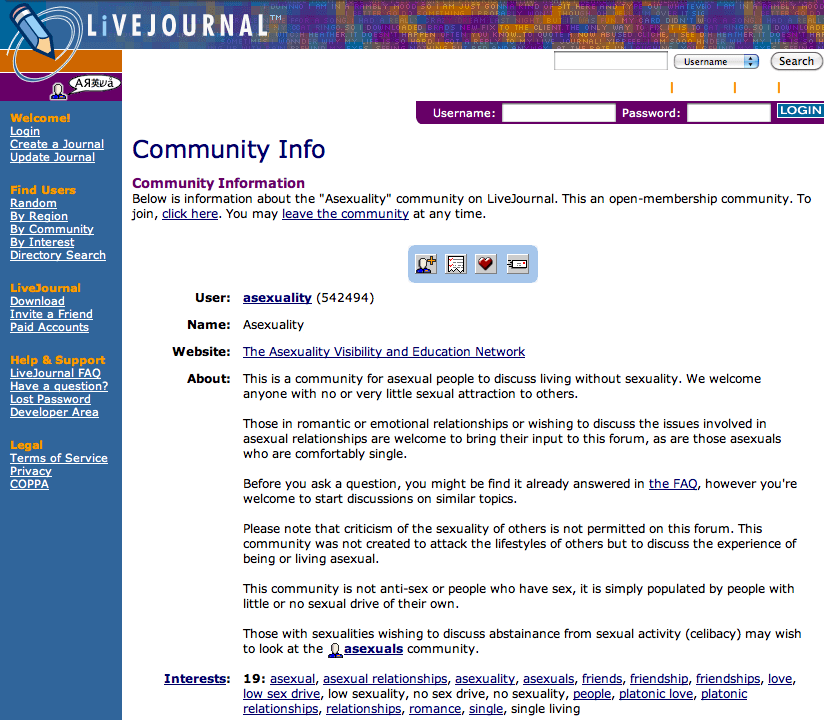
The community quickly attracted a small but extremely enthusiastic group of members. These were mainly lurkers on other communities, who identified so strongly with the idea of asexuality that they’d long put up with that highly antisexual tone in the hope of coming across someone else they related to.
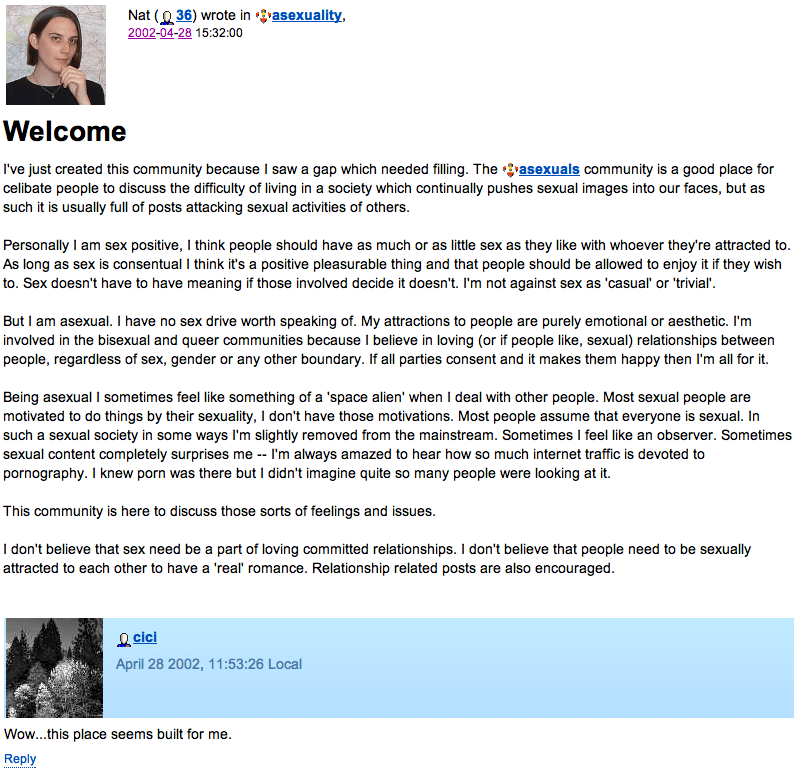
It seemed that positive, constructive asexual discussion was an incredibly refreshing idea to people who were used to a generally negative and reactionary tone of discussion.
Although this meant that the community’s beginning was equally reactionary – in opposition to the tone of other asexual communities
Of course, not everyone immediately understood the difference between the two communities, partly because there were a good mixture of people on LJ Asexuals who ignored the tone of the community profile. Here’s an early discussion of that difference (I’m not sure where I got the idea of ‘classical’ asexuality though!)
Enter David Jay and AVEN
A few weeks later, I was contacted by David Jay, a fellow asexual who’d created a website called AVEN, the Asexual Visibility and Education Network, which was in the process of moving to the prime ‘asexuality.org’ domain.
DJ was another queer asexual who had a similar background of looking for other asexuals through college LGBT societies and queer communities.
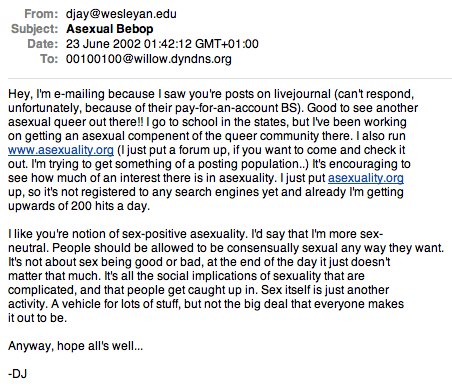
While the AVEN homepage of the time claimed to be an FAQ, the first version of the site read more as one person saying “I exist, and here are some of my theories about what asexuality must be.”
And what theories those where! DJ had hit upon a similar (but catchier) definition of an asexual as ‘A person who does not experience sexual attraction’, explained explicitly as a sexual orientation, and compared with homosexuality, heterosexuality, and most closely with bisexuality.

I found this synchronicity between our approaches exciting and inspiring, so I pored over the materials he’d already written for the website and sent him a long email in response.
A Meeting of Minds
Over the next month, we had a lengthy email exchange, discussing the implications of asexuality as an orientation and my sex positive approach (DJ saw himself as more ‘sex neutral’ and was less reactionary to competing asexual communities – something that the definitive home of online Asexuality needed to be).
I provided critique of some of his models of asexuality, particularly linear continuums from gay to straight and sexual to asexual; something that I was inherently suspicious of as a genderqueer activist from an online community that saw gender as more of an ever-shifting hypersphere of infinite possibilities than a straight line from female to male.
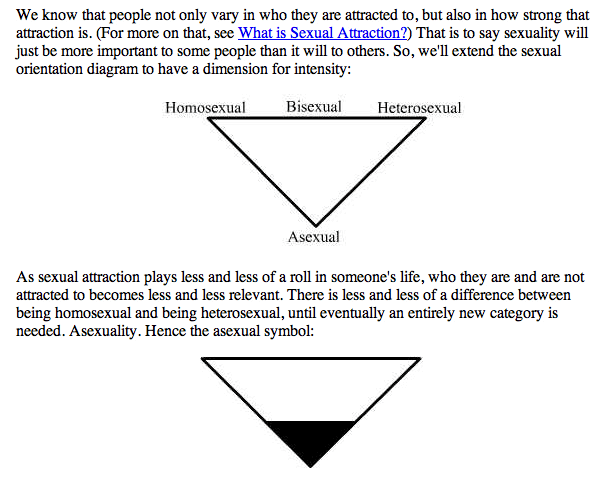
Eventually DJ invited me on board to help develop the AVEN site content and the new discussion forums that had come with the asexuality.org web hosting plan.

I was excited about the idea of building a home for asexuality with a catchy one word URL – no subdirectories or tildas for us! It felt like we were starting something big, like we could be the ‘Amazon.com’ of asexuality(!)
Defining the Shape of Asexuality
These days people tend to think that I’m speaking figuratively when I say “I wrote the FAQ on asexuality”.
![Screenshot circa late 2002, early 2003. 'AVEN: Asexual Visibility and Education Network' the article is titled 'Questions Asked by Asexual and Questioning People' [link to the Archive.org copy]](https://graphicexplanations.files.wordpress.com/2017/10/worldpride-015.png?w=840)
Looking through my email archive from the summer of 2002, it’s quite clear that my FAQ was really a thinly disguised manifesto for positive, inclusive and self-defining asexuality.
This wasn’t surprising – in the 90s Raphael Carter‘s Androgyny RAQ had been one of the most important and affirming web resources I’d found.
I found email exchanges from trans and genderqueer friends who were proofreading drafts of my work.
Some of their feedback on the more conservative early drafts read less like editorial notes and more like cheerleading at the affirmative tone I was lacing through the answers, and encouragement to break the community taboos even further and write the FAQ that would’ve helped my younger self – and often theirs too.
Can We Say That?!
To highlight just how different the early asexual community was from the present day; in one exchange I found, that really shocked me, DJ queries whether I can really say that some asexuals enjoy having sex, as he isn’t aware of any asexual people who do so.
I reply to say that I’m definitely aware of asexuals who do, but so strong was the taboo against asexuals having sex at the time that I didn’t have the courage to admit that I was one of them!
![The list of questions includes: 'I enjoy being sexual with my loving partner but I've never really felt driven to have sex with anyone else, could I be asexual?', 'I identify as [straight/gay/bi/something else] but I still fit your definition of asexuality, am I wrong?' and 'I think asexuality is inherently queer, do you agree?'](https://graphicexplanations.files.wordpress.com/2017/10/worldpride-016.png?w=840)
AVEN community censuses now even record the proportion of online asexual community members who are sexually active – something that would’ve been unthinkably radical back in my day.
We Believe You. You’re Not Broken, Just Different
While AVEN’s front page gave a snappy one line orientation-based definition of asexuality:
Asexual: A person who does not experience sexual attraction.
AVEN was always more inclusive that this implied.
DJ’s conception of asexuality had an area of ‘low intensity’ sexual attraction that was still firmly accepted as fully asexual, and it was represented by the large black area, right there in the site’s logo.
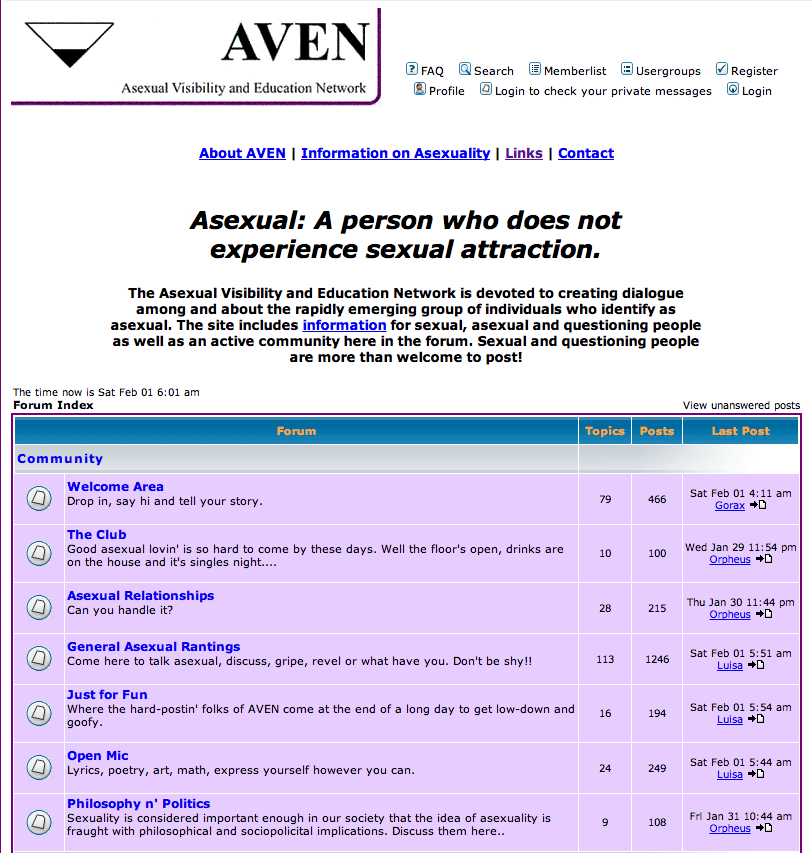
And the links above and below the headline ‘Asexual’ definition led to my big FAQ of Questions Asked by Asexual and Questioning People (wiki version here) which answered almost every self-doubting question with an affirmative message that encouraged self-definition and left space for other types of asexual experiences to be welcomed into our community and to expand the boundaries of what ‘asexual’ meant.
Take the first question, for example:
“Am I asexual?”
You can’t be told the answer to this question. Only you can decide which label accurately describes your experience and feels comfortable for you.
You might find it useful to read this FAQ and the rest of the material on this site. Remember that the definition of asexuality is “No or low sexual attraction to other people”. Of course, just because you fit this definition doesn’t mean you have to identify as asexual. That’s your decision.
My answers always referred to experiences that were later called ‘grey-area’ asexual, or grey-A (a reference to the gradient that was soon added to DJ’s asexuality diagram) as fully asexual, for example:
“I’ve only really been attracted to about three people my entire life but when I was I wanted to have sex with them, would I be sexual or asexual?”
That’s up to you to decide. I think most people would agree that being attracted to very few people would qualify as a ‘low sexual intensity’. It’s likely that sexuality plays a relatively small role in your life, experiencing no attraction toward almost everyone you meet will give you a lot in common with other asexuals.
There was a similarly welcoming and positive tone in the early forum community. Most new members would express joy at finding other people like them, and were welcomed and supported by a communities of others, glad to no longer be the only one.
Love Wins
Unsurprisingly, AVEN’s positive, inclusive and welcoming tone, its catchy and easily understandable orientation-based definition of asexuality, it’s lack of entrance restrictions or pay-to-join policy, and it’s authoritative-looking domain name all contributed to the site and its forum community gradually winning out over competing negative, elitist or simply vague models of asexuality.
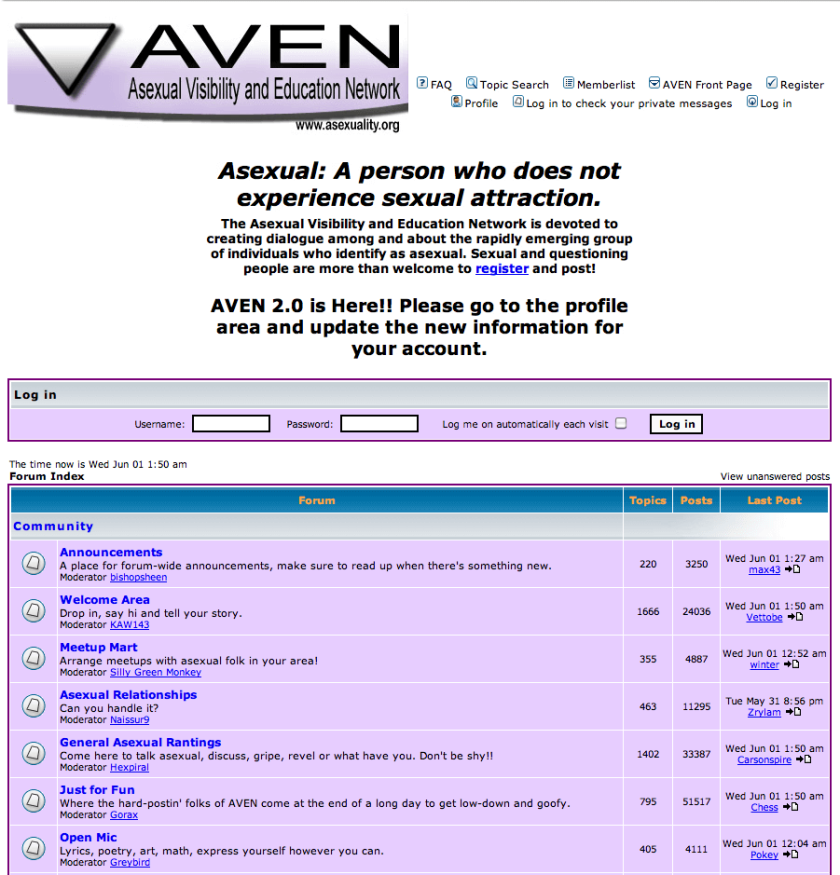
Soon AVEN had more members than any other asexual community, with most members of those communities also joining our fold, and after a year or two, the forum community gained so many active members that it was difficult for anyone to follow all the threads.
At the Frontiers of Discovery
Sadly the text of all our earliest forums discussions appear to have been lost in the upgrade to ‘AVEN 2.0’ – if you’re setting up a similar online community, find yourself an archivist now!
My memory is that the early AVEN forum community was an exciting place to be for an amateur sexuality and gender theorist such as myself.
It felt like we were on the frontiers of theory, deconstructing the entire basis of relationships and intimacy from a unique perspective.
We were exploring how to explain experiences that fell into the ‘grey area’ between sexuality and asexuality, and between friendship and partnership. Exploring the possibilities of nonsexual and nonromantic relationships, of alternative models of intimacy.
I was particularly excited about discussing the possibilities of intimate asexual relationships with sexual people in polyamorous relationships with multiple partners.
I remember enthusiastically sharing my experiences and the many ideas and possibilities I’d learned from the genderqueer, bi and queer communities that I was involved with both in person and online.
And then going to back to those spaces and sharing asexual theory there – and finding many other asexuals already there, ones who had never found a word for this experience that had been such a huge and unspoken part of their lives.
The earliest example of this was the talk on asexuality I gave at the UK Bi community event BiCon 2002 (and have given versions of many more times since over the years).
A 2017 Side Note on the first asexual conference session:
While my BiCon talk was a very early asexual conference presentation, as discussed in side notes above, the earliest conference session on self-defined asexuality was held during the Autism Network International (ANI) conference in November 1995, the precursor to Autreat, organised by Donna Williams, Kathy Grant and Jim Sinclair.
2017 Side Note Ends.
A Whole New Lexicon
The early online asexual community had to develop new vocabulary for talking about asexual concepts, from the concept of a ‘squish’ or ‘friendship crush’ to the experience falling in love with others despite not having sexual attraction towards them, which turned out to be a common experience for many of us.
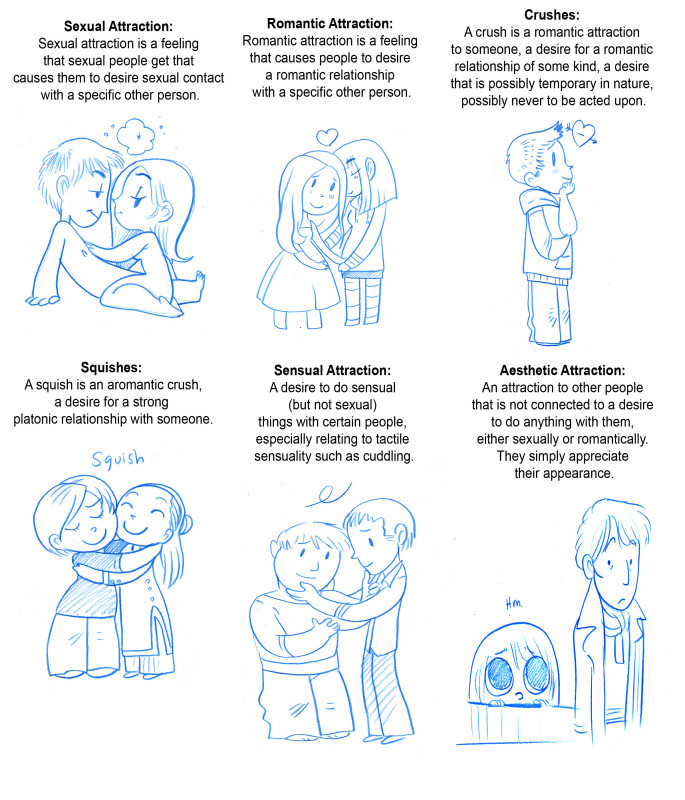
Haven For The Human Amoeba had already coined the concept of romantic attraction, and with it the idea of having a romantic orientation, as many people still seemed to experience romantic chemistry along traditional orientation lines.
As such, people talked about being heteroromantic, homoromantic and biromantic, or in my case queer romantic.
I also brought over the concept of sensual attraction, having met nonsexual bisensual people during a Sensuality workshop at my first BiCon in 2001.
Some members had no romantic orientation and so coined the concept of being aromantic as well as asexual.
Some, like me, had no ‘romance drive’ but felt romantic feelings once in a relationship. After I moved on from the community this was classified demiromantic – a concept explained to me at a later BiCon Asexual Spectrum discussion, that I find incredibly useful for explaining and understanding myself.
We explored the theory of asexuality and identified that some people had undirected libidos, some were nonlibidous. Some people were ambivalent to sex, some enjoyed sexual stimulation, while others were repulsed.
The important thing was that we didn’t define these experiences judgmentally; no one was ‘more asexual’ than anyone else, all were welcome.
As well as talking about asexual and romantic identities, there was early discussion of gender variance too. I’m pretty sure that the language of being agender grew out of AVEN’s forums, because before this genderqueer communities tended to use the terms ‘nongendered’, ‘gender neutral’ or ‘neuter’ instead.
From A Forum To A Movement
From AVEN’s beginnings where David Jay (Dj, aka AVENguy) and Lauren Liebowitz (aka Selie) ran the discussion community, while I (known as ParanoidGynandroid) fielded emails in response to the FAQ, the community grew and grew and soon became self-sustaining, and truly international, hosting versions of the site and community forums in many different languages, that themselves became self-sustaining.
This move to AVEN being run by a group of volunteers and not the work of one owner got an early start when DJ was away from the internet for several weeks in 2002 and Selie became the community manager, while I received all the site’s webmaster emails and fielded more than just FAQ-related questions.
AVEN is now truly democratic, with not only elected forum moderators, but an elected Project Team dedicated to promoting asexual visibility and education, creating and updating materials and organising events such as this one. People come and go, doing what they can and bringing their passion to the asexual movement.
I’m honoured to have been one of the first in a long line of volunteers that made this community what it is.
And the ethos of queer, inclusive asexuality we all built together in the early days of AVEN grew into numerous offshoot projects, as well as many unaffiliated competing or complementary organisations and communities.
Openly asexual people can now be found within myriad organisations, groups and publications, and not just those with queer focus. All kinds of communities now welcome and celebrate their asexual spectrum members. While, initiatives like Asexual Awareness Week continue to spread that acceptance further.
We’ve come a long way in 10 15 years!
Stepping Away From Asexual Visibility
During the mid-2000s, AVEN’s activism became increasingly focused on increasing visibility and public understanding of asexuality.
AVEN members began to appear on chat shows, current affairs programmes and documentaries, giving media interviews and putting a human face to this novel and at-the-time easily dismissed concept.

As an androgynously presenting, genderqueer nonbinary transgender person with a transsexual medical history, I decided I perhaps wasn’t the best poster child for public understanding of asexuality and so stepped back to allow others to become the faces of asexual visibility.
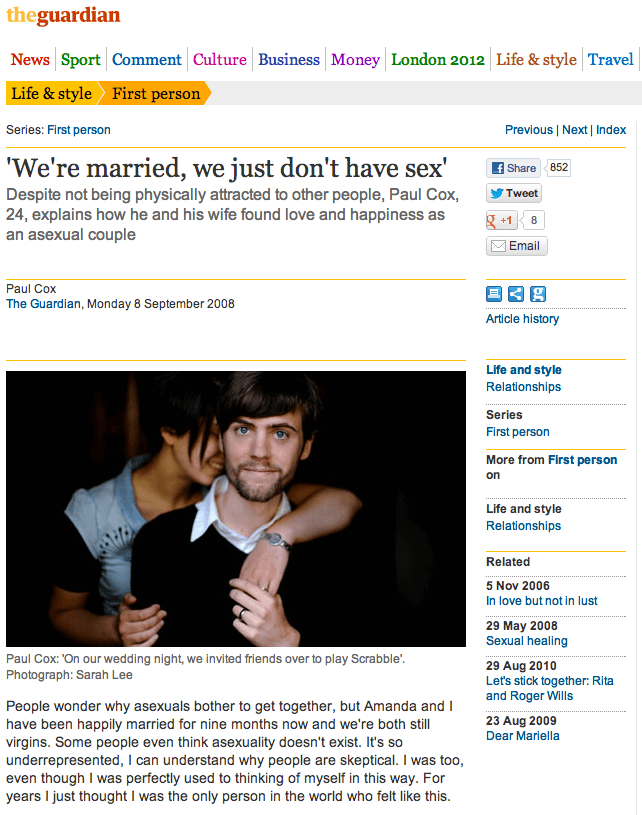
My decision to remove myself from the public image of asexuality may seem problematic (and it should!) but I was intensely aware of how easily I could become another Toby figure, presenting too many overlapping identities and experiences that would be conflated by the simplistic fast paced, tightly edited media world, or mixed up in the memories of viewers who only half understood.
I felt like my involvement had the potential to damage both the genderqueer and asexual communities – and this was before any of my autistic traits were formally identified!
I was also simply aware from hard learnt experience, that if I ever tried to explain more than one of my identities at a time, it was much less effective than keeping things focused.
Which isn’t to say that I didn’t continue to do asexual visibility and education work within the queer, trans and neurodiversity communities over the years, I just always steered clear of being anyone’s poster child.
Moving On
Away from the forums, I began a new romantic relationship with another persuasive sexual person, and so drifted even further away from asexual activism and back towards queer and genderqueer communities.
That relationship ended a couple of years later and I went back to my default position of being an ’emotionally self-sufficient’ standalone person with no romance drive (I’ve long preferred this description to ‘single’ as that has connotations of looking for partners), and that’s how I remain to this day.
I still had the activism bug though, finally launching the androgyny I’d planned since 2000, creating a Nonbinary Wiki, co-chairing my local trans group and later creating resources for neurodiversity and working with autistic spectrum focused groups. Always taking the lessons learned from AVEN with me.
Revisiting the Asexual Community in 2012
After a period of almost five years away, I recently returned to AVEN and other online and in person asexual communities.
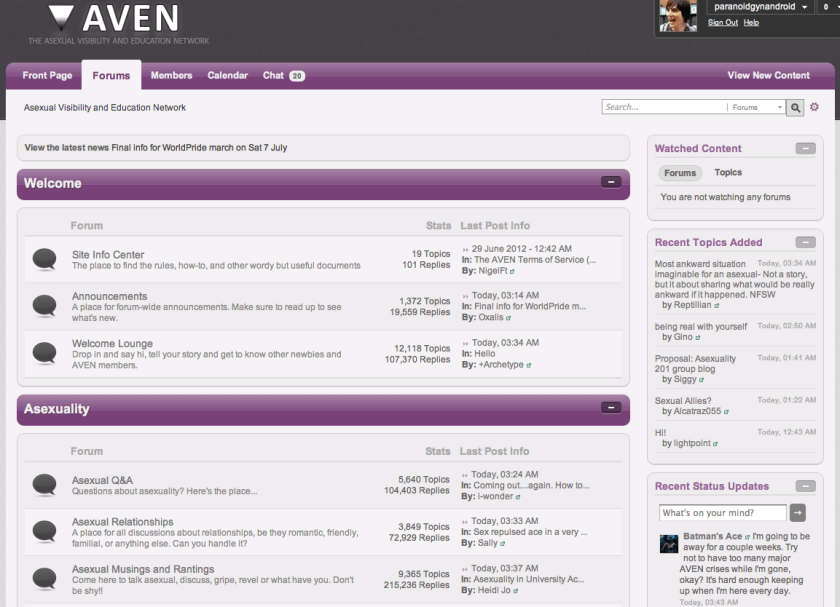
Revisiting an estranged community from my past felt like having coffee with an old flame, and made me realise quite how many of the things I love are associated with fandoms and communities of people that I share that passion with.
In a way, communities like ours are another form of shared intimacy that compliments friendships and partnerships.
Signs of My Involvement
In 2006 my FAQ was moved to the wiki where anyone in the community could improve on it. Between 2007 and 08 the earlier answers we rewritten and greatly enhanced, adding in references to newer concepts and removing some of rebuttals to negative asexual communities that no longer exist. To this day, many of my questions and the later answers still remain in their original form.
When reading though my version in preparation for this talk, I was surprised to find advice contained within that I was sure I’d only learnt years later through painful life experience.
It seems that it took another decade to really learn and truly believe the positive messages that I’d idealistically hoped could be true in 2002.
The Dismantling of Community Taboos
I’ve been asked to reflect on how the community has changed since I was involved.
Something that stands out to me is how many of the taboos that I used to perceive as existing around sex and other aspects of sexuality no longer seem to be such controversial issues.
Whether these were actually imposed by the community or something that was self-enforced, in the early days it was rare to see people saying they enjoyed sex with a partner, and certainly not in the present tense.
These days, with a large and mature community and much wider understanding of asexuality, there’s considerably more space for people who are comfortably affirmed as asexual while enjoying sex with their romantic partner.
This comfort has been reflected in our media image, where we’ve gone from a nonsexual and aromantic message to gradually seeing more and more media coverage of romantic asexuals, first in relationships with each other, and now in relationships with sexual people.
I’m pleased to have lurked in a number of recent discussions about ‘sexual asexuals’ and seen discussion of lots of different reasons why people without sexual attraction choose to enjoy sex.
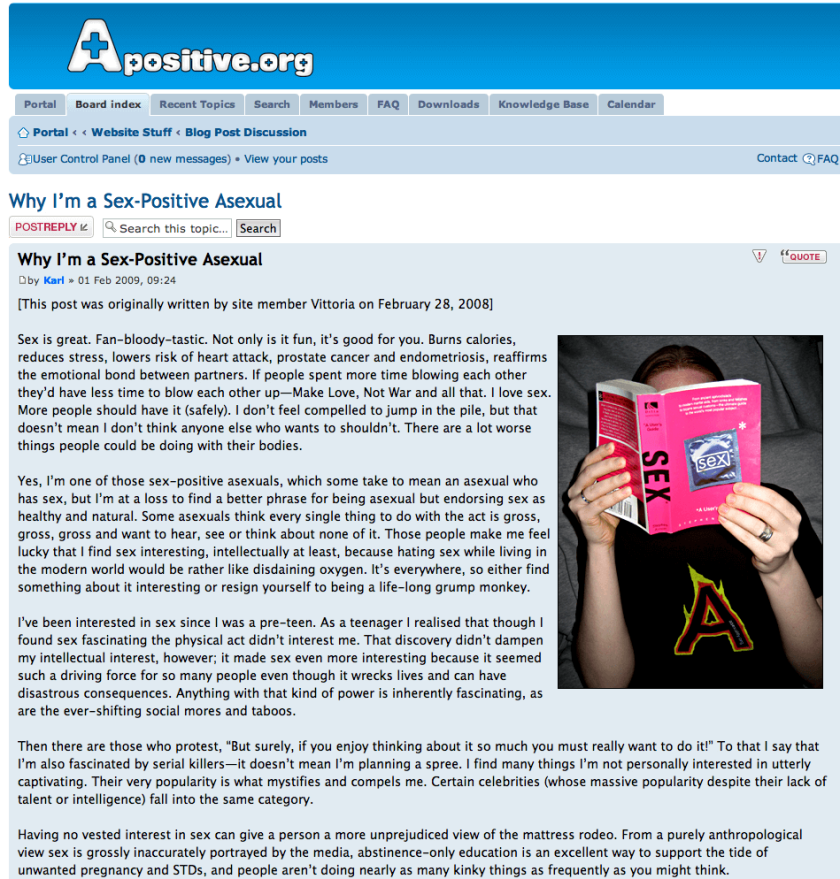
And I was extremely pleased to see national press coverage of this event giving statistics of how many asexuals are sexually active and how many enjoy sex.
The Taboo of Kink and ‘Directed Libido’
While I recall early AVEN discussions of masturbation and libido, these were always described as ‘undirected’, I don’t recall anyone speaking up about having kinks or fetishes despite their inclusion in my FAQ.
I think that in the early days, discussion of sexually active or masturbating asexuals caused enough controversy and policing in some places that disclosing any more information seemed unthinkable.
One of the first things I found on returning to the community was an excellent discussion on the Apositive forum about the myriad different things asexual people with libidos think about when masturbating or having sex.
This was not the asexual community I remembered!
I’m told that there’s now a thriving and accepted asexual subcommunity on FetLife.
Taking Control of Our Narrative
I also now feel less pressure to be the perfect asexual poster child when representing the community in visibility work.
With the rise of YouTube and video blogging, the community has been able to bypass the media and take control of the narrative we make about asexuality. It’s possible to search for asexual voices and see far more diversity than any magazine article or news story can ever hope to depict.
Searching YouTube, I’ve found no shortage of asexuals of different genders; transsexual asexuals, nonbinary asexuals, agender asexuals and of course large numbers of women and men as well!

The End of Poster Children and Gold Star Asexuals
I was especially pleased to have been pointed at critiques of these poster child pressures from the HotPiecesofAce discussions of the Unassailable or Gold Star Asexual. [Also see the A Carnival Of Aces group blogging project]
And I was so happy to see an autistic asexual so prominently featured in the (A)Sexual documentary. [Region locked video, public teaser trailer here and official trailer here]
So, unlike a decade ago, I have much less worry that talking about my gender, romantic orientation, autism and asexuality together will cause people to assume those things are caused by, or invalidate, each other. Or that my experiences must represent all people with all my labels.
I’m one voice in an ocean of others, and I’m happy that I can give this talk without obscuring the other identities that intersect with my asexual experiences.
Unintended Consequences
If I were to write an FAQ on asexuality today, it would look almost nothing like the one I wrote in 2002.
My biggest regret is that by putting so much emphasis on combatting the antisexual and sex negative voices that had dominated some earlier asexual spaces, we inadvertently made the early AVEN less welcoming to asexuals who experienced their asexuality primarily as repulsion, whether due to sensory sensitivities or emotional triggers.
I also feel that, with our focus on welcoming the widest range of asexual experiences into our queer asexual community, while not wanting to give anti-sexuals and prescriptivist nonlibidonists any foothold within AVEN, we unintentionally pushed some of the most culturally marginalised asexual people – the aromatics – so far out of AVEN that many don’t feel welcome in the asexual community at all.
When I visited AVEN in 2010, I was shocked to discover that there was still no aromantic forum on the site, and there still isn’t in 2012, meanwhile the aromantic community has moved away from AVEN to their own forum. [Now at Arocalypse, while AVEN finally has its own Aromantic space.]
Many times in my life, I’ve felt the wide umbrella term I identified with be slowly squeezed to look more and more like the most visible faces within it, until I no longer felt that I belonged at all.
I’m upset to suspect that I inadvertently had a role in doing the very same thing to the aromantic community, despite primarily identifying as demiromantic and having had no romantic relationships in other a decade.
The Need To Keep Challenging Taboos and Homogeneity
Of course there will always be people who feel uncomfortable within any community, and there will undoubtedly be some things that community members feel pressured to identify with, or to not talk about.
However, I can say that from my perspective things have definitely changed for the better overall.
I’m glad we have voices of asexual abuse survivors, disabled asexuals, autistic asexuals, depressive asexuals, and aces of other communities whose sexualities are often questioned or invalidated by cultural prejudices, speaking up as empowered members of the asexual community, both within AVEN and in the many other community spaces outside of it.
But we should continue to identify and talk about our taboos and cultural norms.
We must talk about the voices that are missing and be sure to provide space for dissent and nonconformity.
We should also signal boost and recognise the importance of groups formed away from AVEN, and celebrate the new identities and communities that have developed out of the language of nonsexual, aromantic and grey-asexual intimacy that our community explored.
The Biggest Difference
And the final, most obvious difference between the asexual community of today and the one I drifted away from in 2004 is sheer size. AVEN has long been too large for any one person to possibly keep track of, and not only has the community become multilingual and far more international, but it’s spread far and wide online, so that there are now many happily out asexuals who’ve never seen the need for an AVEN account or even heard of AVEN’s existence.
Not only that, but we’re no longer a purely online community, there are now many in person asexual groups, meet ups and events.
Ten years ago I’d never imagined that I’d have access to local meet ups or that there’d be asexual marching groups at Pride – and I certainly wouldn’t have believed that I’d be speaking at this conference!

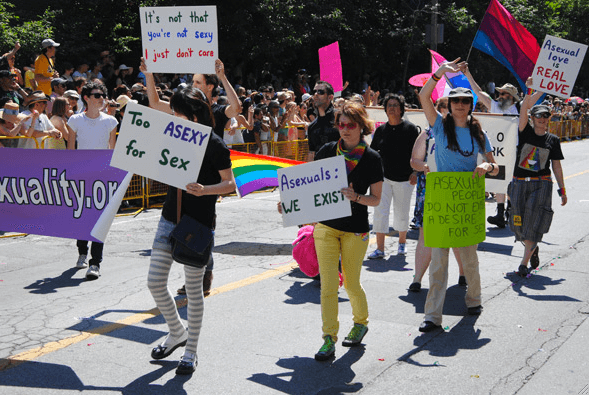
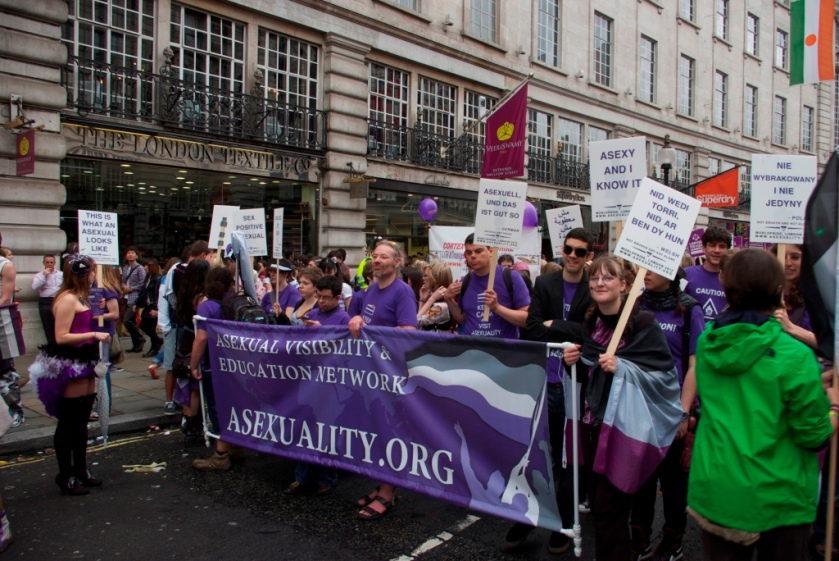
In the decade since the ‘modern asexual community’ was founded, asexuality has become well known and widespread in the types of communities I frequent.
I still find myself surprised but oh so pleased whenever I come across asexuality visibility and inclusion in unexpected and unrelated places.
AVEN can be proud to have achieved so much towards its goals of visibility and education, but there is always room for improvement, and I’m excited to see what the asexual movement will achieve in the decades to come.
So that’s me done, thank you for listening! I’m looking forward to the rest of this conference!
Extras
My talk was recorded on two different cameras and so exists as two different videos. Unfortunately both have terrible sound quality and no subtitles. I’ve enabled community subtitle contributions on mine.
See the very brief Q&A after my talk on the AVEN YouTube channel here (with atrocious audio and no subtitles).
I discussed more memories of my involvement with the beginnings of AVEN in a thread on the Apositive forums in 2010, which was written up as part of a blog post by trivialknot aka Siggy on the site Skeptic’s Play.
If you read one other Asexual Awareness Week blog post, make it this one.
If you read one comic, make it this set of tweets by Lyd Fama.
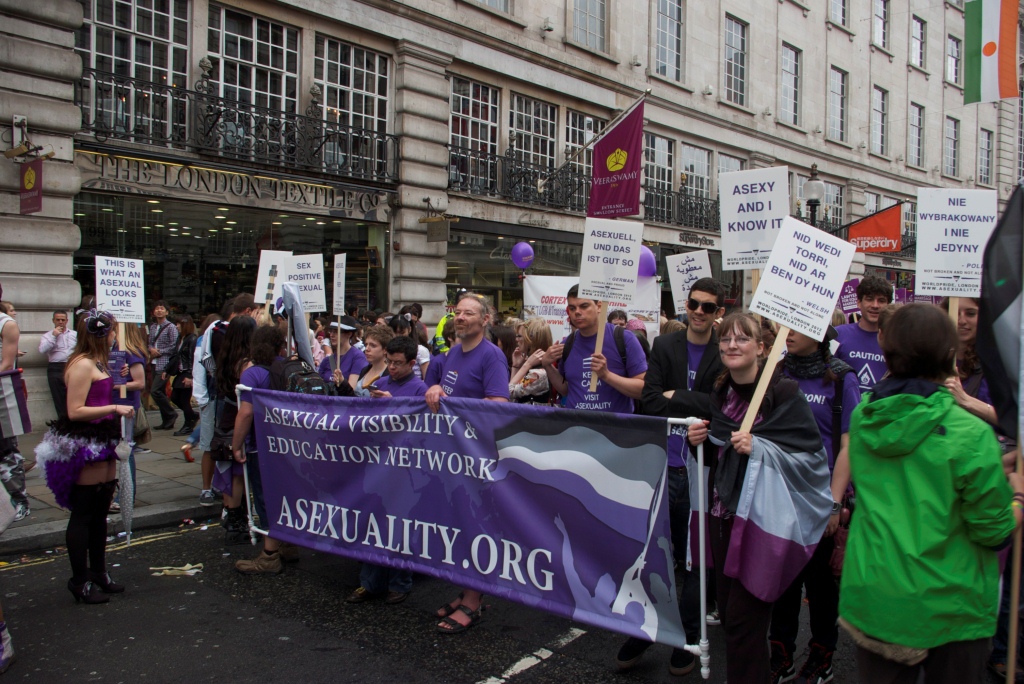

![The Autistic Spectrum? [A gradient from white to grey, labelled '0% Autistic' at one end and '100% Autistic' at the other]](https://graphicexplanations.files.wordpress.com/2013/09/autistic_spectrum_gradient.jpg?w=840&h=194)


![The Autistic Spectrum [A colour wheel showing a huge range of possible colours in a circle, labelled 'Autistic People']](https://graphicexplanations.files.wordpress.com/2013/09/autistic_spectrums_colour_wheel.jpg?w=478&h=388)

